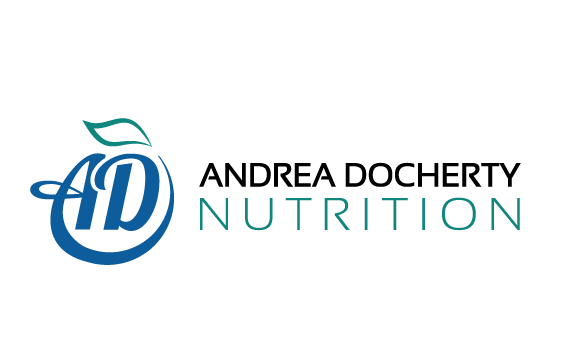(If you want to learn more about this topic – check out this podcast episode about Carb Loading Mistakes to Avoid! Listen here or check out The Fuelled Triathlete on Apple Podcasts or Spotify for more endurance nutrition advice)
You often hear of runners and long distance endurance athletes fuelling up on a big pasta dinner the night before a race. Is this going to help your performance? Does that mean you have carb loaded? Read on to find out this and more!
What is Carb Loading?
Carbohydrates are the body’s main source of energy during physical activity. We store carbs as glycogen in the muscle and liver – enough glycogen to get us though about 60-90 minutes of moderately intense exercise.
That big pasta dinner, which is full of carbohydrates, may be an effort to increase your glycogen stores, also known as carb loading. However, true carbohydrate loading involves eating a higher carbohydrate diet for a few days (not just the night before) and tapering exercise. This will help you to maximize your glycogen stores, beyond what they can typically store day to day so you can sustain exercise at a harder pace for longer.
For shorter races under about 1.5 hours, such as a 5 or 10km race or short triathlon, carb loading is not needed because this is not enough to deplete glycogen. However, for longer, continuous endurance events for sports such as cycling, marathon running, long distance triathlons, and cross-country skiing, carb loading will be beneficial.
How to Carb Load:
Early methods of carbohydrate loading used in the 1960s were very extreme. They involved intense exercise and a very low carb intake to fully deplete stores and then a very high carb intake to supercomensate and maximize glycogen. Over time new, less extreme methods to carb loading have been studied and developed that are still effective.
Carb loading should take place 1-3 days before a race. At this point, you are likely tapering your exercise and the combination of less exercise and a higher carbohydrate intake will help to fill glycogen stores. 7-12g of carbohydrates per kg of body weight is recommended.
So, for a 60kg (132 lb) female that’s at least 420g carb/day. That’s a lot of pasta! (1 cup of cooked pasta has about 45g of carbohydrates). Good news is, there are many other foods you can eat besides pasta. It hasn’t been shown that one carbohydrate rich food in particular is better at storing glycogen
Selected Examples to Include while Carb Loading
- Rice
- Sweet Potatoes
- Beets
- Oatmeal
- Quinoa and other whole grains
- Bread, bagels, wraps
- Fruit
- Squash – Butternut, acorn
- Cereal
Choose your carbs wisely and keep overall total calories about the same. Sorry but this isn’t an excuse to eat anything in sight! Foods you may think are carb rich like cake and pastries are also high in fat. You still want high quality, nutrient dense foods to keep you feeling you best. Higher fat carbs like deep fried foods, chocolate, pastries may lead to eating excess overall calories and unwanted weight gain and leave you feeling sluggish – things you do not want leading up to a race!
While carb loading, you’ll still be eating some protein and fat, but not as much. Overall calorie intake remains around the same. So at a meal, replace some protein and fat with carbohydrate rich foods to help prevent unwanted fat gain.
Weight Gain:
- Expected weight gain while carb loading is about 2-4 lb but if done correctly, the weight gained is the glycogen and water that your body stores. With every gram of carbohydrate you store as glycogen, your body also stores 3 grams of water along with that.
Carb Loading Tips:
- Watch out for fibre intake. Fibre will help to keep you regular, but as your overall intake of carbohydrates intake is high, you may be getting a lot of fibre. Too much fibre can lead to diarrhea maybe constipation and GI distress. Include low fibre foods too like white rice and pasta, saltine crackers. Also be aware that too little fibre can lead to constipation.
- Compact sources of carbohydrates can help you meet your needs if you are feeling full – such as jam, honey, sports drinks, and sweetened yogurt.
- Don’t wait until the last meal before the race to load up on carbs because they may not fully digest and just leave you feeling quite full. You may find a larger breakfast or lunch works best if find a carb heavy dinner makes you feel full in the morning.
- Just as you train your gut to fuel you during long runs, you want to try out carb loading during long training runs.
That big pasta dinner the night before your race isn’t necessarily going to boost your performance the next day, but incorporate more high quality, carbohydrate rich foods a few days leading up to a long race. If this is new for you, be sure to test it out before a longer training run.
If you want personalized nutrition advice, carb loading and race day nutrition plans or help with your other nutrition needs contact me at andreadocherty.rd@gmail.com
For more useful tips for runners, you may be interested in these posts:
Post Exercise Nutrition Guide to Refuel and Recover
Written by: Andrea Docherty, RD
Registered Dietitian and Sports Nutritionist
Windsor, Ontario

